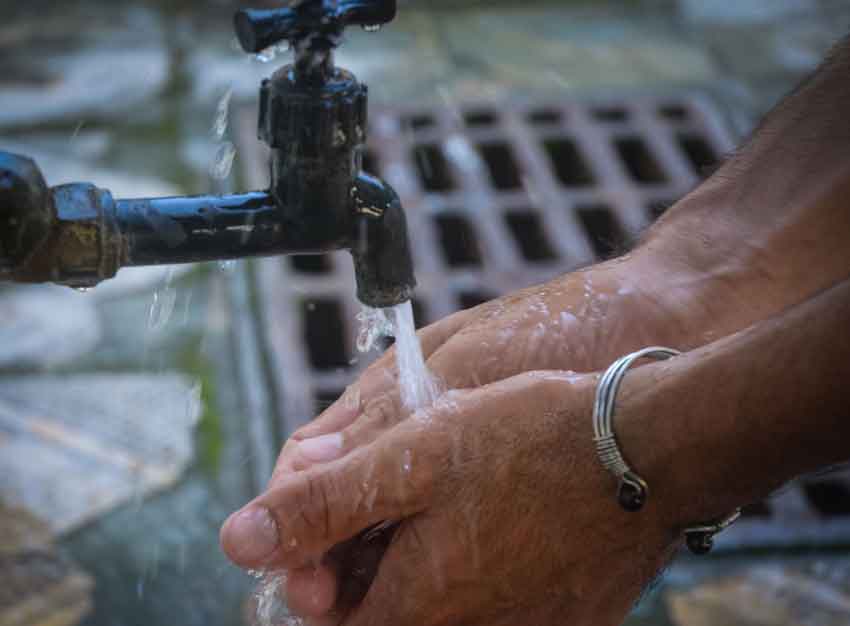 Some parts of the city, the lower areas, receive water with a certain degree of consistency, but the higher areas lack this benefit. |
When the neighbors of the elderly Mirella Feria Betancourt cried out for water, which had not reached their homes for 21 days through the aqueduct network, she joined those voices to underpin the reality of that lament: now there is water in the dams, but the pumping is failing.
Sitting in the usual rocking chair of her house, on José Martí Street, in the city of Las Tunas, she comments: "There are those who live near here and they get water, but we have the bad luck to live in the highest part, very close to the road.”
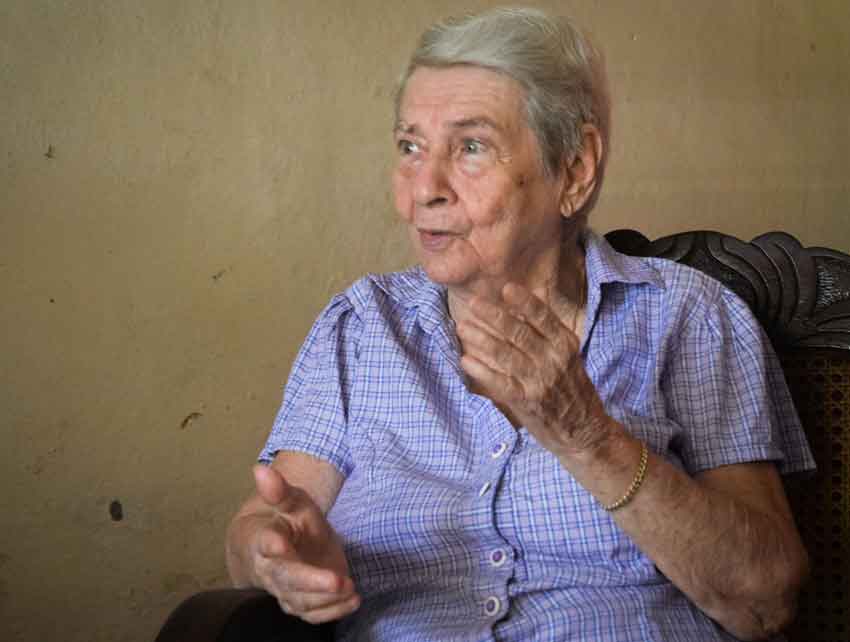 For many years, Mirella was a regular customer of the watermen who sold water in carts on various streets of the city. |
Someone reminds her that the lack of water has always been one of the "Achilles' heels" of Las Tunas, and Mirella recalls the 40s, 50s, and 60s of the 20th century when many people from Las Tunas living in the urban massif of the city depended on what the watermen (aguateros, as they were popularly known) sold.
These men - she remembers - rode on a horse-drawn cart with two 55-gallon tanks, which they welded together to increase the capacity. At the end of the container, they had a built-in key that they opened to sell the liquid for five or eight cents a can of about 20 liters (gas can as it was called).
As they passed through the streets, with the wooden rope from which the whips hung to subdue the beasts, they rattled the tank to warn that the "aguatero" had arrived, although others simply shouted: "Water, water, water!"
During the exchange in Mirella's living room, people remembered the men who made a living selling the liquid, such as old Laureano, Lencho, Alfredo, El Gallego, Nené, Pedro, the Haitian Martín, Amancio, Jorge, Armando, Gilberto, Israel...
"The group was so large that it was already considered a big family in the Aguilera district. Even when names were repeated in the neighborhood and people asked for Pedro, for example, someone would say Pedro, the waterman, or I know, that's Alfredito, the waterman's son!”
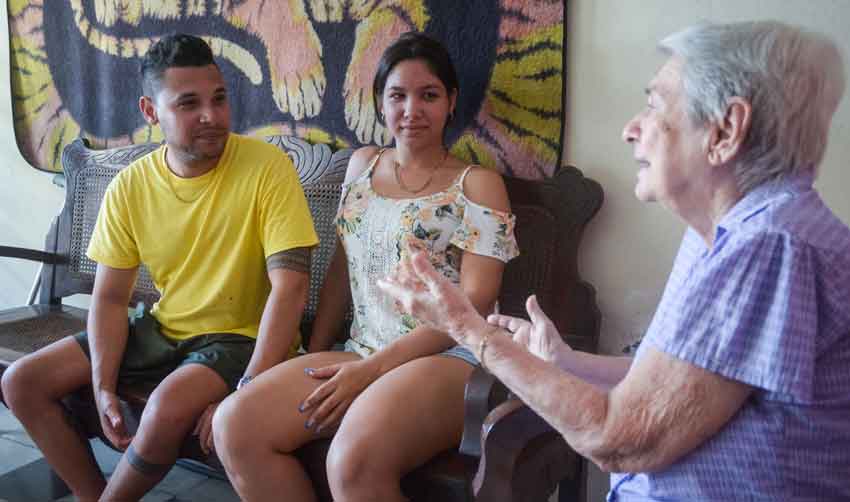 Mirella tells the new generations what the water situation was like in the 40s, 50s, and 60s of the 20th century. |
And where did they get the water from? The younger ones asked and were answered ipso facto: from two enormous wells, in-depth and diameter, in the same area, owned by Diosdado Téllez and Manuel Rodríguez, who received the money for the value of each trip.
Water carriers apart, the aljibes (cisterns) installed in courtyards of the main urban massif of the locality began to be remembered, using which rainwater was received from galvanized zinc channels installed on the roofs of the houses.
The most common way was to open Creole wells in the courtyards of households, thanks to the work of the men who made a living from such a cumbersome and dangerous job. But not everyone could do it, it cost a lot of money... so many families had to walk up to 80 or 100 meters to fetch water from the well, which was offered to them with a good face.
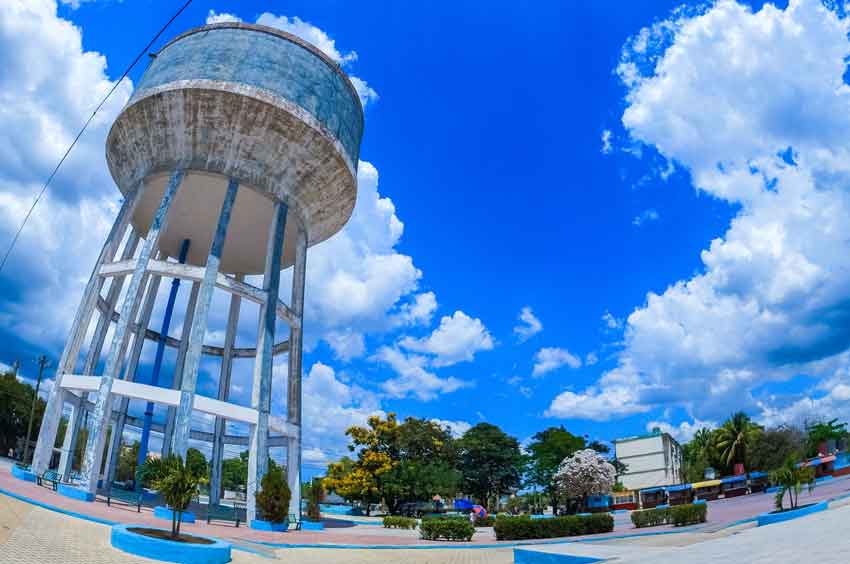
Everything began to change in 1973 when the city was not even close to 100,000 inhabitants - today it has about 170,000. That year was of great joy for the people who lived in Las Tunas, with the opening of the city's aqueduct, in the Buena Vista district, where an enormous 31-meter-high elevated tank with a capacity of 500,000 gallons was inaugurated.
Today, this great reservoir, baptized as a gigantic white elephant, does not provide services; it is in the restoration phase, but it continues to be a point of reference and a place for revelry in its surroundings.
From that point on, the era of well-blinding began. Development came, the locals said, until a deep crisis in 2004 and 2005, due to a severe drought that had left the reservoirs very depressed, made many of those who had cut their wells regret their failed decisions.
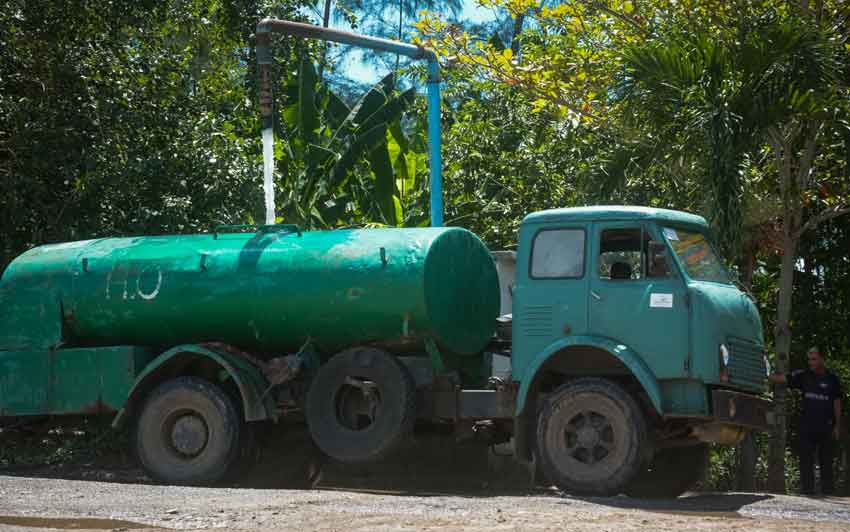 Main water intake in Las Tunas so that the tank trucks can transport the liquid to the most vulnerable areas. |
A revolution then began to build new cisterns or wells even in the narrow doorways of homes, decisions that are now applauded as serious supply problems return.
And all the more so because Las Tunas is the province with the least rainfall in Cuba, according to the isometric map, with an average of 1,038 millimeters annually.
No evil lasts 100 years, says an old proverb. Someday the aqueduct will turn green, but it is never too much to depend on oneself when the source fails and so that the water shortage does not continue to be the Achilles' heel of the Balcony of Eastern Cuba.





